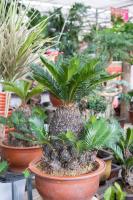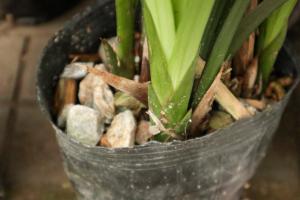Is My Plant Pot Too Big?
If you are an avid gardener or plant lover, you understand the importance of finding the perfect pot for your plants. A pot that is too small can restrict growth and cause root entanglement, while a pot that is too large can lead to excess moisture retention and other problems. One question that often arises is: "Is my plant pot too big?" In this article, we'll explore the potential problems of using a pot that is too large for your plant, and what you can do to prevent them.
The Problems with an Oversized Plant Pot
While it may seem counterintuitive that a big pot could be bad for your plants, there are several reasons why using an oversized plant pot could lead to problems. One issue is that a large pot can retain excess moisture, which can lead to root rot, fungus, and other soil-borne diseases. Additionally, a pot that is too large can make it difficult for the plant to absorb the water it needs, which can slow growth and development.
Another issue with a plant pot that is too large is that it can cause the plant to have a weak root system. If the roots have too much room to grow, they may become lazy and not work as hard to search for nutrients and water. This can lead to the plant becoming dependent on the soil and fertilizer, which could ultimately lead to stunted growth.
Signs That Your Plant Pot is Too Big
So how do you know if your plant pot is too big? There are a few signs you can look out for, such as:
The soil is always wet, even days after watering
The plant is not growing as quickly as it should
The plant is wilting despite being properly watered
Roots are growing out of the drainage holes
The plant is easily toppled over by wind
What You Can Do
If you suspect that your plant pot is too big, there are several things you can do to remedy the situation. First, you can repot the plant into a smaller pot that allows for better drainage and nutrient absorption. If you don't want to go through the hassle of repotting, you can also add more soil to the current pot, which can help to fill the empty spaces and create a more suitable environment for your plant.
Another option is to add more plants to the pot. This can help to fill any empty spaces and create a more balanced environment for your plants. Just make sure that the plants you add have similar growing requirements and won't compete with one another for resources.
Conclusion
While it may be tempting to give your plants more space to grow, using an oversized plant pot can lead to a variety of problems, from excess moisture retention to stunted growth. By keeping an eye out for the signs of an oversized pot and taking steps to remedy the situation, you can create a healthy and thriving environment for your plants to grow and flourish.

 how many times do yo...
how many times do yo... how many planted tre...
how many planted tre... how many pine trees ...
how many pine trees ... how many pecan trees...
how many pecan trees... how many plants comp...
how many plants comp... how many plants can ...
how many plants can ... how many plants and ...
how many plants and ... how many pepper plan...
how many pepper plan...
































